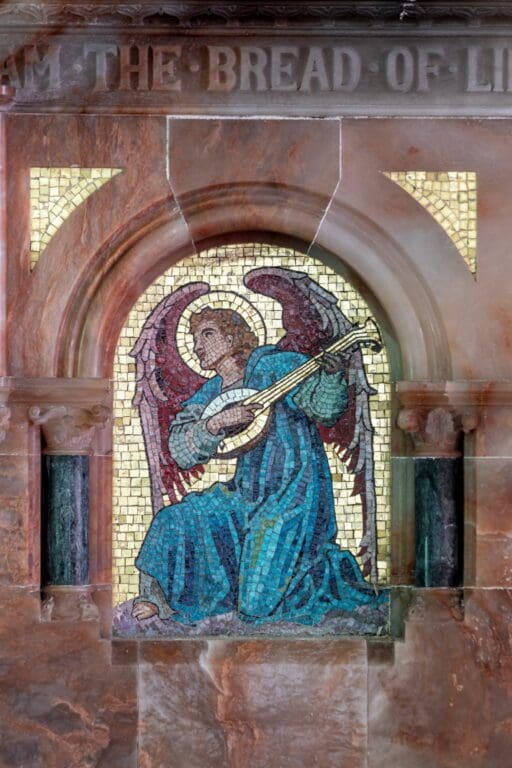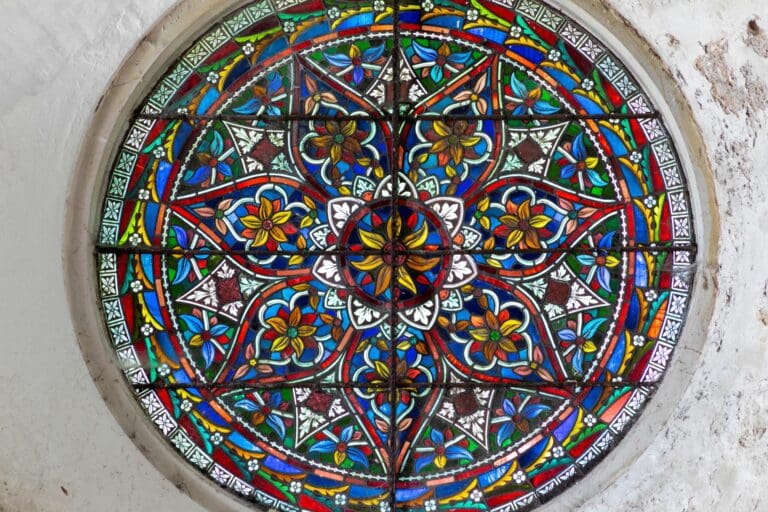
Decoration is saved for the sanctuary, where the mosaics and marbles give a Byzantine feel.
The Rev. W E Jelf commissioned his brother-in-law, the Revd. John Louis Petit (1801-68), to design this remarkable chapel in 1862. Petit was one of the leading architectural writers of his age, and one of the few who resisted the ‘copy Gothic’ that was so fashionable in the 19th century. In addition to architecture, he was an accomplished topographical watercolourist. The great success of St Philip’s is how, despite its continental influences, it is in harmony with its North Wales landscape; Petit achieved this through the use of local materials and building traditions.
The rusty, rubble-slate construction includes a lean-to loggia with stone benches and pairs of round-headed, Romanesque windows and a unique bellcote-cum-chimney, which holds four bells that are rung by large wheel found in a shelter on the north side of the church. For many years, Bill Tilman, who climbed Everest in 1938, rang these tinkling bells at St Philip’s.
Inside, St Philip’s (which is also known as Caerdeon Chapel) is quite simple. The walls are white-washed and bare. The pews are plain. Decoration has a Byzantine feel and is saved for the sanctuary. The east window, a Crucifixion by Kempe, was inserted in 1892 in memory of Samuel Holland.
Another extraordinary element to St Philip’s is that over the course of fourteen months, Petit painted the construction of the church. So, within the archive of the National Library of Wales, we have a full archive of watercolours charting the development of the church. St Philip’s is Petit’s only known building.
In the 1860s, St Philip’s rocked the Anglican church. The Bishop of Bangor issued a licence stating that, as the church was a private chapel for The Rev. W E Jelf, Censor of Christ College, Oxford, services and sermons should be delivered only in the English language. This was challenged by the Rector of Llanaber (in whose parish it lay), as there was a legal obligation to hold Welsh language services in Welsh-speaking areas. The rector brought Jelf before the Court of Arches and was successful, but the situation worsened when the Bishop of Bangor introduced a bill into the House of Lords to enable services to be conducted in English in Welsh speaking areas provided certain conditions were met. This became the English Services in Wales Act of 1863, passed as a direct result of the building of this church.
This unique and historically important church joined our collection in 2021.




The buttons below link to church or local information on other websites.